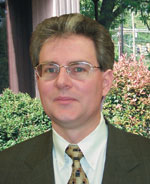NEW YORK CITY — April 2, 2018 — Circular Systems S.P.C. (Social Purpose Corp.) is a materials science company focusing on converting agricultural, industrial and post-consumer wastes into high value textile fibers for the fashion industry.
The company was confirmed as the first place winner of the 2018 Global Change Award, which recognizes the most exciting sustainable fashion developments, at a ceremony in Stockholm. Circular Systems S.P.C. was awarded a grant in excess of $350,000 from the H&M Foundation, after being selected from among 2,600 applicants, coming from more than 180 countries.
In 1960, 97 percent of our fibers came from plants and animals. Today, that number is approximately 35 percent. Petrochemical fibers are now the norm but natural fibers are the exception. Circular Systems S.P.C. has spent the past 20 years creating a low-impact production process that will redefine the meaning of sustainable materials in the fashion industry. Through their revolutionary Agraloop Bio-Refinery process, they are able to generate food-crop fiber out of plant waste that is left by the harvesting of food crops.
Food crop waste is often burned or left to rot, releasing significant amounts of carbon dioxide and methane gas into the atmosphere. By creating a low-cost, closed loop bio-refinery system, this process also brings additional income to farmers, turning their crop residues into more income.
The Agraloop Bio-Refinery offers a solution. With this, the company sees a 10 million ton-per-year opportunity to convert food crop wastes into high value fiber for textiles and industry, specifically using banana trunks, pineapple leaves, sugarcane bark, and stems of oilseed hemp and flax plants as our raw materials.
“We’ve created what we call the agraloop,” explains Isaac Nichelson, the CEO of the American-based company. “[It’s a] regenerative system that uses plant-based chemistry and plant-based energy to upgrade the fibres whilst enriching the local communities and creating a new economic system.”
Nichelson explained further how the impact of winning the Global Change Award will effect this disruptive start-up, saying that, “winning the Global Change Award means we can begin to unlock huge value for the textile and fashion industry. We can now propel this important technology much faster into scaled production. The grant will be used for optimizing our closed-loop technology, protecting IP, and beginning to produce commercial Agraloop BioFibre™ productions.”
Posted April 2, 2018
Source: Circular Systems S.P.C.





